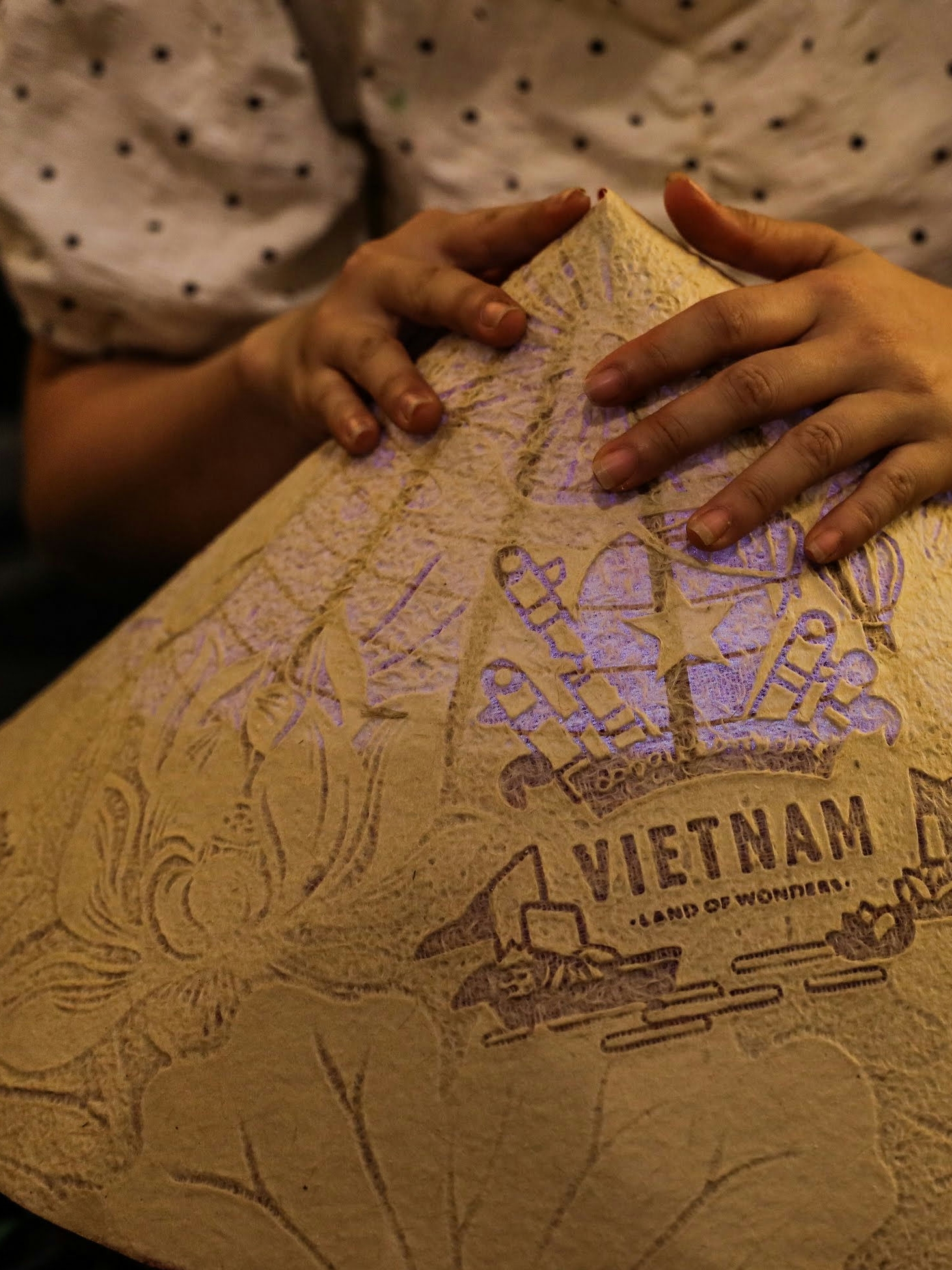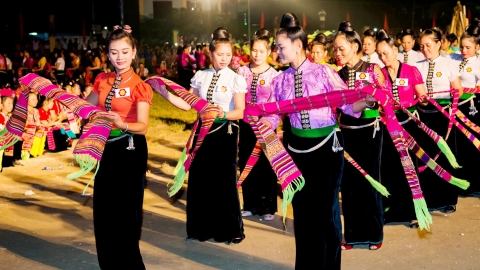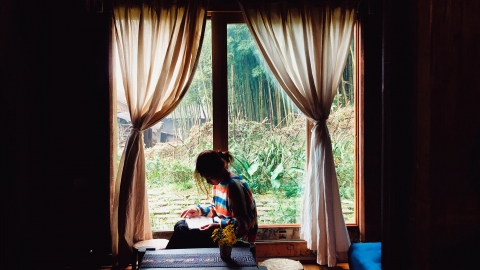The art of handmade paper has long been a traditional cultural feature of many Asian countries. If in Japan there is Ise Katagami - a type of handmade paper carving that has captivated the world, or Jiǎnzhǐ - the art of paper cutting that has been very popular since the 2nd century AD in China, then in Vietnam there also exists a series of paper art forms known as Truc Chi. This concept was defined by Writer and Translator Buu Y in April 2012.
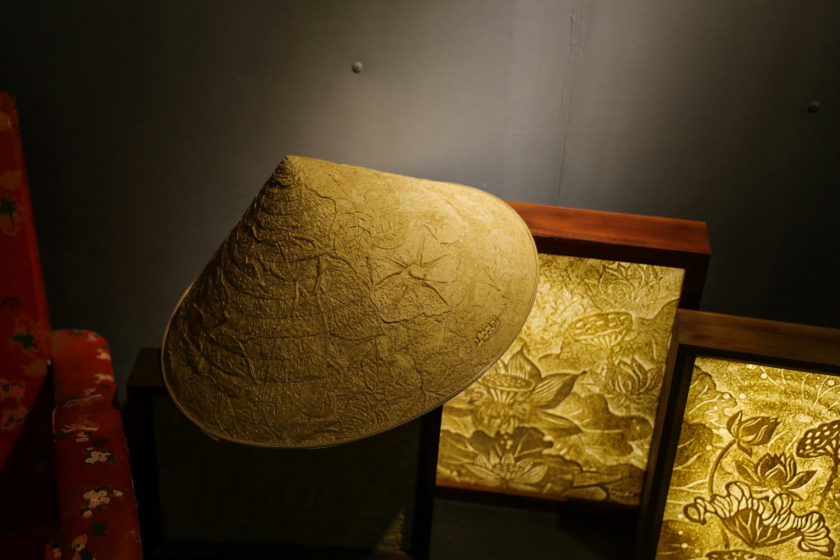
Conical hats are made with handmade Truc Chi art.
According to Mr. Buu Y, with the image of bamboo as a symbol of Vietnamese culture and spirit, Truc Chi is the name of a new type of paper-art of the Vietnamese people (not just bamboo paper). Truc Chi exploits most of the available fiber materials from straw, bamboo, sugarcane, banana, duckweed, corn, pineapple, mulberry, leaves, grass...
"Bamboo thread" manufacturing process
The process of making Truc Chi consists of two main stages. One is the traditional papermaking process. The raw materials are soaked, cooked with lime, ground, pounded into pulp, and then "rolled" into paper sheets on a "rolling" frame.
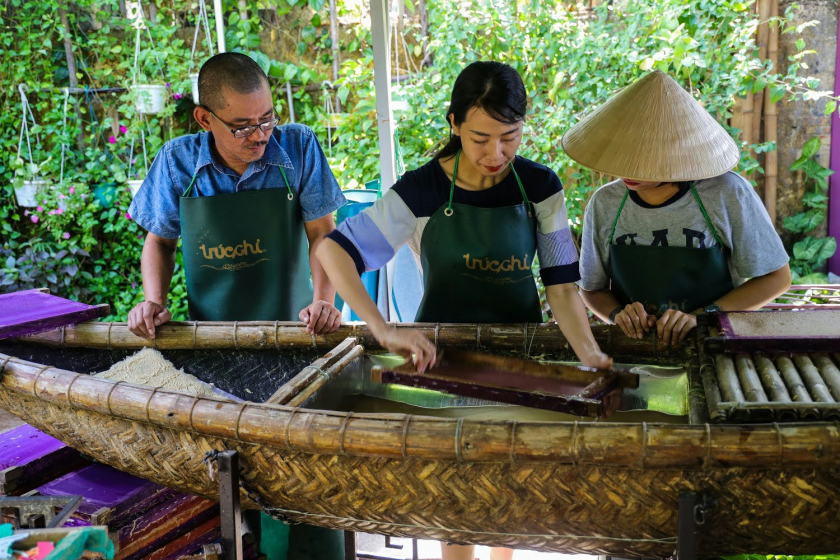
Artisans prepare Truc Chi by soaking it in water to soften the raw material.
Next is the Truc Chi process. Right on the wet paper, the artist will use a nozzle to create water pressure to change the fiber structure, creating different thicknesses, with images that have been cut according to the sketch. This operation is carried out many times, according to the principle of metal engraving and serialization techniques, creating many layers of subtle tones and shades.

Arrange details on material
Next is the Truc Chi process. Right on the wet paper, the artist will use a water pressure nozzle to change the fiber structure, creating different thicknesses, with images that have been cut according to the sketch. This operation is carried out many times, according to the principle of metal etching and serialization techniques, creating many layers of subtle tones and shades. In addition, the artist can also use the water pressure nozzle as a special "painting brush" to draw directly on the wet paper surface, creating special effects.
The application of water pressure techniques according to the principles of graphic arts, with the idea of creating a paper-in-itself artwork, is the core point that makes Truc Chi different and unique.
Unique cultural beauty
The characteristic of Truc Chi is the richness and flexibility in the expression of many types of fibers, of the system of tones, shades... delicately in the thick and thin layers that trucchigraphy brings. Especially when interacting with light.
The surface effect is that when there is direct light, thick areas will give light shades, thin areas will give dark shades. With the translucent effect, the opposite effect will be given: thick areas will be dark, thin areas will be light. This flexibility is what attracts and inspires viewers and creators, and at the same time, it is the ability to respond and participate in the visual art game in a formal and proper way.
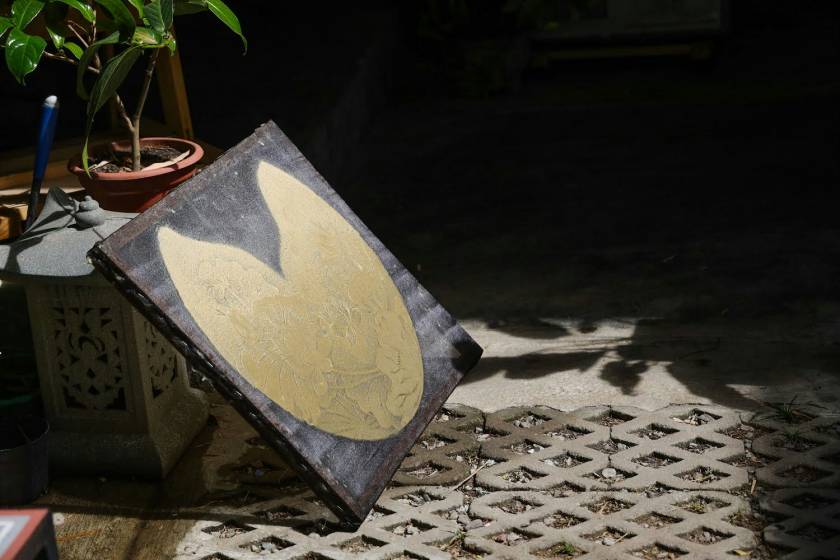
Dry finished Truc Chi products under natural sunlight
Truc Chi can be a work of art in itself, imbued with graphic language; on the other hand, Truc Chi is also ready to “dialogue” with the visual signals placed on it. Besides, Truc Chi also completely meets the diverse and special requirements of applied art in forms such as product design, interior and exterior, costumes, fashion, jewelry, etc. Especially when combined with traditional craft villages to create unique works of art.
Bamboo is not only a visual art but also has practical applications. Bamboo is a work in itself but can be combined with other material techniques (hand-printing, drawing, lighting, etc.) or combined with traditional crafts such as embroidery, weaving, hat making, etc. to create perfect works of art as well as unique and one-of-a-kind.
More information
Currently, Vuon Truc Chi is one of the most widely known Truc Chi brands in Vietnam. The main facility is located at 5 Thach Han (Hue) with more than 15 local artisans, Vuon Truc Chi's products combine the art of Truc Chi paper with the traditional culture of the ancient capital.





